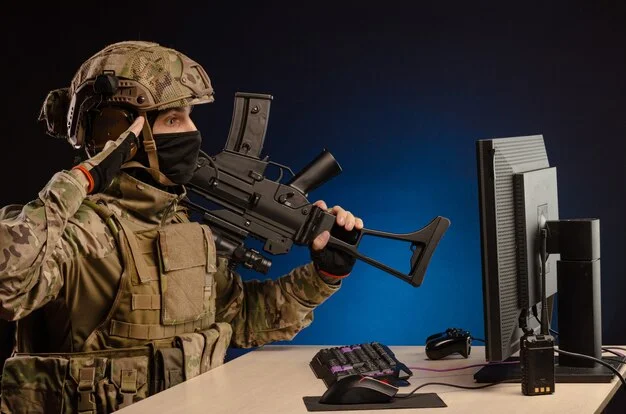In today’s rapidly evolving world, security threats have become more sophisticated and unpredictable. From public spaces to private properties, the risk of gun-related incidents poses a serious concern. Traditional surveillance systems, while effective in monitoring environments, often fall short in providing real-time threat detection. This gap has led to the growing importance of real-time AI gun detection in modern surveillance systems.
AI-powered gun detection technology leverages advanced algorithms to identify firearms instantly, triggering immediate alerts that help prevent tragic events. This article delves into why real-time AI gun detection is critical for modern surveillance systems, its benefits, working mechanisms, and its role in enhancing public safety.
The Growing Need for Enhanced Security Measures
Over the past decade, there has been a noticeable increase in gun-related incidents across the globe. Mass shootings, armed robberies, and violent crimes have become more common, raising concerns about public safety. Schools, shopping malls, corporate offices, and even entertainment venues are vulnerable to such threats.
Traditional surveillance systems primarily rely on human operators to monitor video feeds, which has its limitations:
- Delayed Response: Human operators might not notice a weapon immediately, leading to delayed actions.
- Human Error: Fatigue, distractions, or even momentary lapses in attention can result in missed threats.
- Reactive Approach: Traditional systems are more reactive than proactive, meaning action is often taken after an incident has already begun.
This is where real-time AI gun detection becomes crucial. By automating the detection process, it minimizes human error, reduces response times, and provides a proactive approach to threat management.
How Real-Time AI Gun Detection Works
Real-time AI gun detection uses computer vision and machine learning algorithms to identify firearms in video feeds. Here’s a step-by-step breakdown of the process:
- Video Input: Surveillance cameras capture live video footage in real-time.
- AI Analysis: The footage is analyzed by AI algorithms trained on thousands of images of firearms from various angles, lighting conditions, and environments.
- Gun Detection: The AI system identifies the shape, size, and characteristics of a gun, distinguishing it from other objects.
- Instant Alerts: Once a firearm is detected, the system sends immediate alerts to security personnel, law enforcement, or emergency response teams.
- Automated Actions: In advanced systems, detection can trigger automated responses such as lockdown procedures, alarm activation, or even notifying local authorities.
The speed and accuracy of AI detection significantly outperform traditional surveillance methods, making it a game-changer in security operations.
Key Benefits of Real-Time AI Gun Detection
1. Faster Response Times
The most significant advantage of real-time AI gun detection is its ability to identify threats instantly. In active shooter situations, every second counts. Early detection allows security teams and law enforcement to respond quickly, potentially saving lives.
2. Proactive Threat Management
Instead of reacting after a crime has occurred, AI gun detection enables a proactive approach. Security personnel are alerted the moment a weapon is visible, allowing them to intervene before shots are fired.
3. Reduced Human Error
Human operators can become fatigued or distracted, especially when monitoring multiple screens for long periods. AI systems, however, work tirelessly without losing focus, reducing the risk of missed threats.
4. Scalable and Versatile
AI gun detection can be integrated into existing surveillance infrastructure, whether in schools, shopping malls, airports, or corporate offices. Its scalability makes it suitable for both small businesses and large public venues.
5. Enhanced Public Safety
Real-time gun detection not only protects the people within a specific facility but also enhances overall public safety. Quick responses can prevent attackers from moving to other locations or causing mass casualties.
6. Data-Driven Insights
AI systems can analyze data from previous incidents, helping security teams understand patterns, improve protocols, and make data-driven decisions to enhance security measures.
Applications of Real-Time AI Gun Detection
1. Schools and Educational Institutions
With the rise in school shootings, real-time gun detection can play a pivotal role in protecting students and staff. Early detection can trigger lockdown procedures and alert law enforcement before the situation escalates.
2. Public Venues and Events
Concerts, sports events, and large gatherings are often targets for potential threats. AI gun detection systems help monitor these spaces effectively, ensuring quick responses in case of danger.
3. Corporate Offices
Workplace violence, including active shooter situations, has become a growing concern. Real-time detection systems help corporate security teams respond swiftly to potential threats.
4. Government Buildings
High-security areas like government offices, military bases, and courthouses benefit from advanced surveillance systems equipped with AI gun detection to safeguard personnel and sensitive information.
5. Retail Spaces and Shopping Malls
Retail environments are vulnerable to armed robberies and violent crimes. AI gun detection provides an additional layer of security, protecting customers and staff.
6. Transportation Hubs
Airports, train stations, and bus terminals are high-traffic areas where security threats can have devastating consequences. Integrating AI gun detection into existing surveillance enhances overall safety.
Challenges and Limitations of AI Gun Detection
While AI gun detection offers numerous benefits, it’s essential to recognize some challenges:
1. False Positives
AI systems, although highly accurate, can sometimes misidentify objects as firearms, leading to false alarms. Continuous training and updates to the algorithm can minimize these errors.
2. Privacy Concerns
Surveillance systems that use AI may raise privacy concerns, especially in public spaces. Striking a balance between security and privacy is crucial.
3. Dependence on Camera Quality
The effectiveness of AI detection relies heavily on the quality of surveillance cameras. Poor lighting, low-resolution footage, or obstructed views can affect accuracy.
4. Integration Costs
Implementing AI technology into existing systems may require additional investment. However, the long-term benefits often outweigh the initial costs.
Future of AI in Surveillance Systems
The future of surveillance lies in the continued development of AI technologies. As algorithms become more sophisticated, we can expect:
- Improved Accuracy: Ongoing machine learning will enhance detection capabilities, reducing false positives.
- Predictive Analytics: AI could predict potential threats based on behavior patterns before a weapon is even drawn.
- Integration with Other Technologies: Combining AI gun detection with facial recognition, biometric scanners, and smart access control systems will create comprehensive security solutions.
FAQs about Real-Time AI Gun Detection
1. How accurate is real-time AI gun detection?
AI gun detection systems are highly accurate, with detection rates often exceeding 90%. However, accuracy can vary based on camera quality, environmental factors, and the system’s training data.
2. Can AI gun detection work with existing security cameras?
Yes, many AI gun detection systems are designed to integrate seamlessly with existing surveillance infrastructure, making it cost-effective for businesses and organizations.
3. Does AI gun detection invade privacy?
AI gun detection focuses on identifying objects, not personal data. While it does involve surveillance, its primary purpose is to enhance safety without compromising individual privacy.
4. What happens when a gun is detected?
When a firearm is detected, the system sends real-time alerts to designated personnel. This can include security teams, law enforcement, and emergency responders. Some systems can also trigger automated actions like lockdowns.
5. Is AI gun detections only for large organizations?
No, AI gun detections systems are scalable and can be tailored for small businesses, schools, and large public venues alike.
Conclusion
In an era where security threats are increasingly unpredictable, real-time AI gun detections stands out as a vital tool for modern surveillance systems. Its ability to detect firearms instantly, reduce response times, and minimize human error makes it a game-changer in enhancing public safety. Whether in schools, offices, public venues, or government buildings, AI-powered gun detections systems provide the proactive security measures needed to protect lives and prevent tragedies.
Investing in real-time AI gun detections isn’t just about adopting the latest technology; it’s about creating safer environments where people can live, work, and gather without fear. As security challenges evolve, so too must our approach to surveillance—and AI is leading the way.







